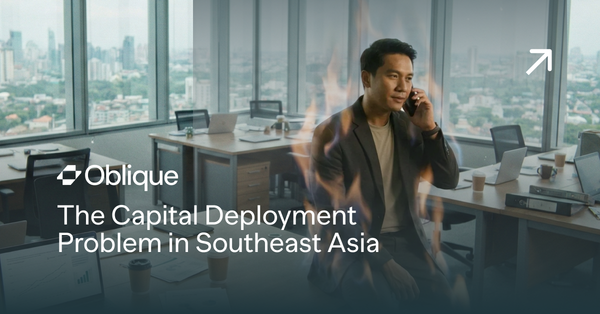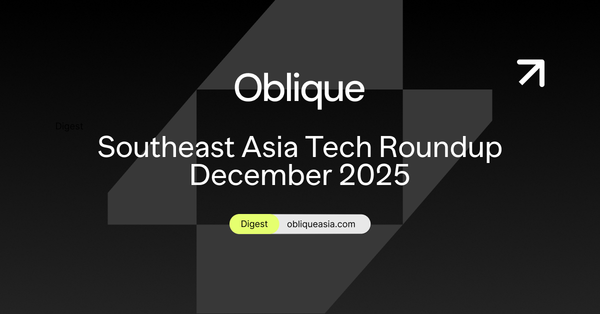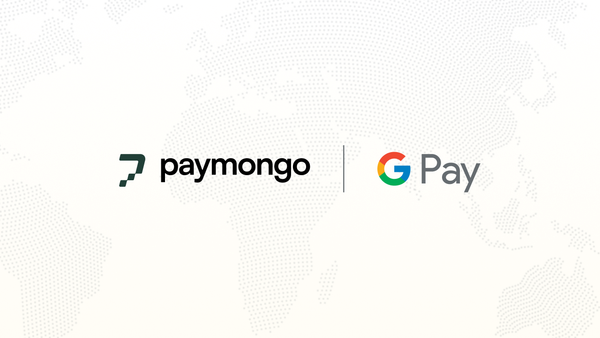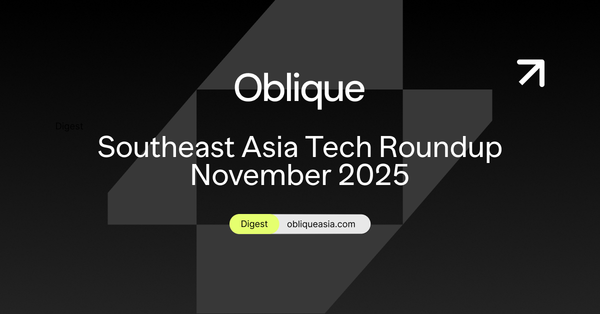Why Southeast Asia Is Quietly Rejecting Hustle Culture
Burned out but not broken, Southeast Asia is rewriting the rules of work and tech—on its own terms.

At 3:47 AM on a Tuesday, Aryo stares at his phone screen in Jakarta, watching another notification from his startup's Slack channel. The message reads: "Quick sync needed before tomorrow's demo." He'd been awake for 19 hours straight, surviving on instant noodles and energy drinks, embodying the hustle culture that Silicon Valley exported to Southeast Asia. But something snapped that morning. Instead of responding immediately, he turned off his phone and walked to his apartment balcony, watching the city wake up below. "This isn't sustainable," he whispered to himself—words that would echo across a generation of Southeast Asian tech workers discovering they don't have to sacrifice their humanity for success.
The Burnout Epidemic Meets Ancient Wisdom
Southeast Asia's tech boom brought unprecedented economic growth, but it also imported Western hustle culture wholesale—and the results reveal a profound cultural contradiction. While 83% of Asia's employees reported experiencing burnout in the past year, the region's response has been uniquely informed by centuries-old wisdom about balance and community.
Rather than simply accepting this as the price of progress, a quiet rebellion is emerging—one that's reshaping how an entire generation thinks about work, technology, and what it means to live well. This isn't Western self-help repackaged for Asian consumption. It's ancient wisdom meeting modern overwhelm, creating something entirely new.
Digital Minimalism: When Smartphones Become "Rice Mixed with Sand"
The movement extends beyond just working less—it's about working differently. Leon, a 29-year-old creative consultant from Wuhan, exemplifies this shift. When food delivery apps started peddling loans and bike-sharing sites featured matchmaking options, he realized smartphones had become "like eating rice with sand mixed in it". His response wasn't to rage against technology but to curate it thoughtfully.
Leon's 18-month smartphone hiatus represents a broader trend. In China alone, tens of thousands have joined digital minimalism forums on platforms like Douban, sharing strategies for what Cal Newport calls "digital decluttering"—using technology intentionally rather than compulsively. The movement reflects deeper cultural values: the Japanese concept of ma (negative space), Buddhist principles of mindful consumption, and Confucian ideals of harmony over excess.
This cultural instinct toward mindful curation extends beyond individual choices, shaping how entire communities approach technological integration.
Platform-Driven Behavior: From Superapps to Social Payments
Southeast Asia's embrace of superapps like Grab and Gojek creates a fascinating tension between empowerment and dependence. These platforms create a $23 billion revenue opportunity by 2025 while delivering increasingly seamless experiences that align with local values of convenience, community, and consolidated relationships.
The superapp model succeeds here because it reflects broader cultural preferences for holistic relationships over transactional interactions. Users don't want to manage dozens of separate apps; they want trusted platforms that understand their local context. Yet this consolidation creates new forms of digital dependence and shapes daily behaviors in unprecedented ways.
This shift becomes even more pronounced in payment culture. The region's rapid adoption of digital payments—with cash transactions expected to fall from 47% in 2019 to just 14% by 2027—isn't just about convenience. It's creating new forms of social interaction and community engagement.
In the Philippines, over 90 million people use GCash or Maya, but these platforms function as more than payment systems. They're becoming social networks where users share rewards, split bills, and participate in group savings challenges. QR codes have become a new form of digital etiquette, with their own unwritten rules about payment timing, tip amounts, and social reciprocity.
This matters because payment rituals have deep social meaning in cultures where how people pay reflects values about relationships, hierarchy, and community responsibility. Digital payments are encoding these cultural practices in new ways while creating space for them to evolve.
The Creator Economy: Redefining Success on Local Terms
While hustle culture promised that grinding harder would lead to success, Southeast Asia's creator economy is proving that authenticity and community matter more than endless output. The regional influencer marketing industry grew from $638 million in 2019 to a projected $2.59 billion by 2024—but the most successful creators aren't the ones working 80-hour weeks.
Success comes from building genuine relationships with audiences who value consistent, thoughtful content over constant noise. 40 to 60% of Southeast Asian internet users use social media influencers and KOLs as their main source of information for financial decisions, but they're drawn to creators who understand local context and cultural values.
The creator economy has democratized entrepreneurship in ways that challenge traditional corporate hierarchies while maintaining cultural authenticity. 482 million Southeast Asians are now on social media, creating unprecedented opportunities for individuals to build sustainable businesses without sacrificing their values or well-being.
Healing & Harmony: A Cultural Response to Burnout
Perhaps most surprisingly, Southeast Asia's tech overwhelm has sparked a renaissance in spiritual practices—but mediated through digital platforms. The Asia-Pacific mindfulness meditation application market grew from $124.24 million in 2022 to a projected $666.26 million by 2028, representing a 32.3% compound annual growth rate.
Apps like Mind Fi, created by a Singaporean entrepreneur after experiencing stress-induced chest pains at 29, offer one-minute meditations, haptic breathing exercises, and digital detox sessions. These platforms aren't just importing Western mindfulness practices; they're creating culturally specific approaches that integrate Buddhist, Hindu, and Confucian traditions with modern technology.
The movement extends beyond individual apps to community-based spiritual practices. Buddhist temples in Thailand now host extensive web pages and send daily dharma emails, while Indonesian WhatsApp groups like One Day One Juz (ODOJ) enable virtual Quranic movements. These digital spiritual communities are creating new forms of religious practice that transcend geographic boundaries while maintaining cultural authenticity.
Just as spiritual tech responds to burnout, so too does the broader approach to work-life integration. Rather than seeking perfect equilibrium between separate work and personal spheres, many Southeast Asian professionals are pursuing integration and harmony—approaches that reflect cultural values about holistic living and interconnected relationships.
Remote work adoption in Southeast Asia has enabled new forms of work-life integration. Malaysia and Singapore have introduced legislation requiring employers to consider flexible work arrangement requests, while 78% of Malaysian businesses are adopting hybrid models. The concept of "face time" remains important, but it's being redefined around meaningful contribution and collaborative relationships rather than physical office presence.
The Failure Revolution: Redefining Success and Shame
One of the most significant cultural shifts happening in Southeast Asia is the gradual transformation of attitudes toward failure. Traditional Asian cultures have long stigmatized failure as a source of shame and family dishonor, but the startup ecosystem is forcing a fundamental reevaluation of these deep-seated attitudes.
Singapore's fintech sector actively seeks candidates with proven records of risk-taking and failure, recognizing that true failure is a strong predictor of a person's ability to pivot, deal with the unexpected, and survive. This represents a profound challenge to traditional Asian values about avoiding risk and maintaining face.
The shift is particularly evident among younger generations. Korean entrepreneurs are increasingly willing to share their failures openly, viewing them as essential learning experiences rather than sources of shame. This cultural evolution isn't about adopting Western attitudes wholesale; it's about creating new Asian models of success that value resilience, learning, and authentic growth.
This reframing of failure connects to broader themes of individual agency within community structures—a balance that appears throughout Southeast Asia's digital transformation.
The Gender Dimension: Safety, Agency, and Collective Action
Women's experiences with technology in Southeast Asia reveal both the promise and limitations of digital empowerment. Safety apps like Jakarta Aman, Dlock, and Riding Pink emerge from genuine needs for women's security in public spaces, but they also highlight how technology can reinforce gender vulnerabilities rather than addressing their root causes.
The SafeHer concept developed by Filipino researchers exemplifies a more empowering approach. Rather than simply alerting contacts during emergencies, it merges defensive functions with women's collective action, creating networks of mutual support and making perpetrators accountable for their actions. This approach reflects broader cultural values about community responsibility and collective strength.
Similarly, Thailand's AI-powered SoSafe platform has reached 600,000 users across 14 provinces, providing tailored advice on domestic violence, sexual harassment, and unintended pregnancies. These platforms succeed because they're designed with local cultural contexts in mind, understanding that effective safety solutions must address both individual needs and systemic inequalities.
The success of these women-centered technologies demonstrates how digital tools can amplify existing cultural values about community support while creating new forms of agency and empowerment.
Language and Digital Culture: Memes as Cultural Assertion
The emergence of distinctly Southeast Asian digital languages and memes represents another form of cultural assertion within global digital spaces. Indonesian terms like "Gak Ada Rejeki" (No Luck) and "Santuy" (chill) carry cultural meanings that resist direct translation, creating insider communities that maintain cultural identity.
Malaysian "Manglish" (Malay-English hybrid language) has become a dominant form of digital communication, with users naturally code-switching between languages within single sentences. This isn't linguistic decay but creative adaptation—young people are using digital platforms to evolve their languages in ways that reflect their multicultural identities.
Southeast Asian meme factories serve as sentiment shapers that operate through visual internet pop culture, creating content that slides under authoritative radar through subversive frivolity. These digital communities are developing new forms of political and social commentary that maintain cultural authenticity while engaging with global conversations.
The Solo Economy: Individual Agency Within Community Values
Perhaps the most intriguing trend is the rise of solo entrepreneurs and single-person households in Southeast Asia. Single households make up half the region and are growing at 2.4% annually, driven by young professionals delaying marriage and parenthood to focus on careers.
This trend might seem to contradict traditional Asian values about family and community, but it's actually creating new forms of individual agency within community structures. Home-based businesses are thriving across the region, enabling entrepreneurs to build sustainable enterprises while maintaining family connections and community involvement.
The at-home entrepreneur movement in Southeast Asia differs from Western solopreneurship because it's embedded in existing social networks rather than celebrating complete independence. These entrepreneurs leverage family support, community connections, and cultural knowledge to build businesses that serve local needs while maintaining work-life integration.
This approach exemplifies the broader pattern emerging across the region: finding ways to embrace individual agency and entrepreneurial opportunity while maintaining cultural values about community and relationship.
Integration Rather Than Resistance: The Path Forward
Southeast Asia's response to tech-driven cultural change isn't about rejecting modernity or retreating into tradition. Instead, it's about creative integration—finding ways to embrace technological benefits while maintaining cultural authenticity and human well-being.
This approach offers valuable lessons for other regions struggling with similar tensions. Rather than seeing technology and culture as opposing forces, Southeast Asian communities are demonstrating that thoughtful integration can create new forms of flourishing that honor both innovation and tradition.
The region's experience suggests that the future of work, technology, and culture won't be determined by Silicon Valley's values or traditional Asian hierarchies alone. Instead, it will emerge from creative negotiations between global possibilities and local wisdom—conversations that are reshaping what it means to live well in a digital age.
In other words, this isn't just about slowing down—it's about choosing how to move. The quiet revolution in Southeast Asia isn't about choosing between technology and tradition, but about proving that another way is possible. In a world increasingly dominated by either/or thinking, the region is demonstrating the power of both/and approaches that create space for human flourishing within technological progress.
As Aryo discovered on that early morning in Jakarta, the real revolution isn't about working harder or switching off completely. It's about reclaiming agency over how we engage with technology and creating lives that honor both our individual aspirations and our deepest cultural values. The future of work—and perhaps the future of human civilization—may well depend on learning from these quiet rebels who refused to accept that progress requires sacrificing their humanity.





